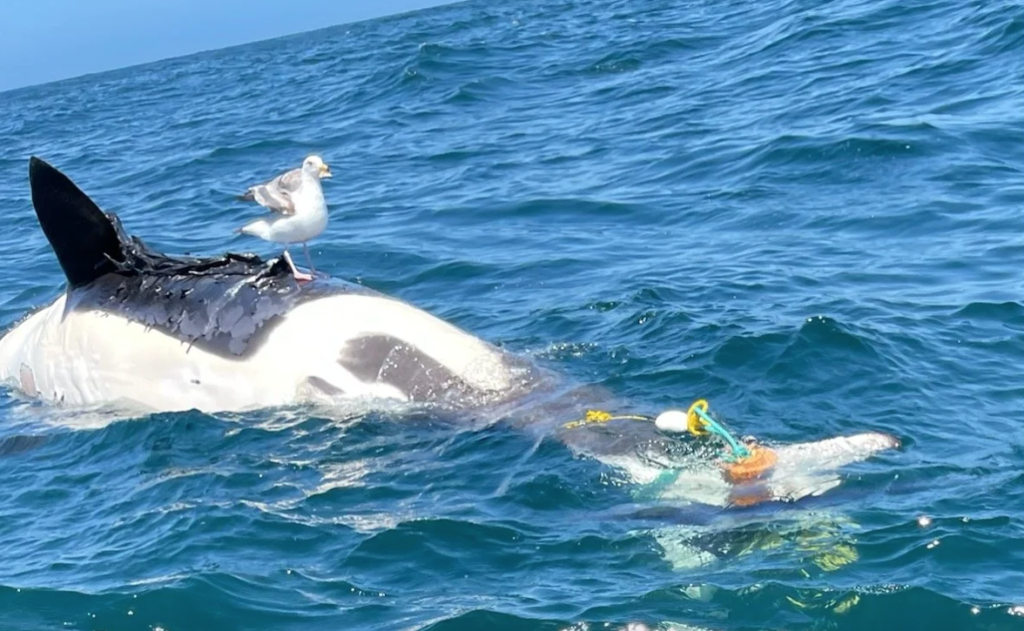
By DANA TIMS/YachatsNews.com
The mystery of what caused the death of a juvenile killer whale off Oregon’s central coast last month appears to have been solved.
The carcass of the approximately 16-foot-long orca was first spotted and photographed by a Salem fisherman June 27 about 25 miles west of Newport dragging fishing or crab gear.
It’s the first known case of a killer whale dying in Oregon coastal waters after being entangled in fishing equipment. What wasn’t clear was whether the orca’s drowning was caused by getting caught in fishing gear or commercial or recreational crabbing equipment.
On Thursday, fishermen spotted the carcass about 10 miles southwest of the mouth of the Coquille River, said Michael Milstein, West Coast public affairs officer for the National Oceanic and Atmospheric Administration.
“The reporting party removed the gear entangling the whale and took it to the dock in Bandon,” Milstein said in an email to YachatsNews. “It was described as sport rather than commercial crab gear with about 50 feet of line.”
The recovered equipment will be turned over to Oregon State University scientists to see if any of the killer whale’s skin was caught in the gear. If it is, Milstein said, it could be subjected to genetic analysis to find out more about the animal.
The carcass was described as “very deteriorated,” Milstein said.
In addition, the Coast Guard has been notified. An analysis of the likely drift direction of the carcass from where it was last sighted may help in an effort to recover the animal. Photos of the orca have also been sent to the Oregon Department of Fish and Wildlife’s office in Charleston for additional examination.
Numerous killer whale pods have been sighted and photographed for weeks swimming close to shore and up into coastal rivers, looking to take advantage of harbor seal pupping season.
Although scientists are not certain of the type of orca that died, it is most likely a transient killer whale, which is by far the most frequent sub-species of killer whales to frequent Oregon’s inner-coastal waters. Transient killer whales feed on other mammals such as harbor seals, harbor porpoises and Steller sea lions, are believed to number more than 400 and are increasing every year.


